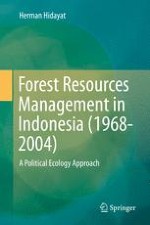2016 | OriginalPaper | Buchkapitel
12. Logging, Coffee Production, Distribution, and Markets in Bengkulu
verfasst von : Herman Hidayat
Erschienen in: Forest Resources Management in Indonesia (1968-2004)
Verlag: Springer Singapore
Aktivieren Sie unsere intelligente Suche, um passende Fachinhalte oder Patente zu finden.
Wählen Sie Textabschnitte aus um mit Künstlicher Intelligenz passenden Patente zu finden. powered by
Markieren Sie Textabschnitte, um KI-gestützt weitere passende Inhalte zu finden. powered by
